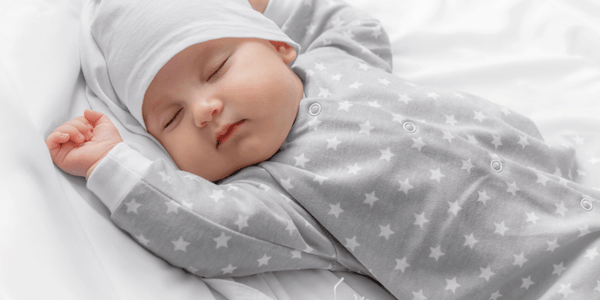How to help your baby learn to get back to sleep by themselves.
Parents hear a lot about self-soothing when it comes to baby sleep. If your baby can manage this, then they will sleep through the night and all your baby sleep worries will disappear, right? Here's what we know about the secret of self-soothing.
What is Self-Soothing?
This is the art of your bubs being able to fall asleep by themselves, without you having to rock, cuddle, feed or soothe them. The elusive goal of self-soothing is the ultimate in parenting wins.
Is It Really a Secret?
How do you think babies learn to self soothe? Thumb sucking? Using a dummy? Possibly. But what we really mean by self-soothing is simply that your baby is able to go back to sleep without the parent intervening when they wake. The age at which babies are able to do this varies wildly, so don’t worry if your child is not there yet (though you are allowed a private high five if they are).
Why Babies Wake Up at Night
There are so many reasons why your bubs might wake and find it hard to get back to sleep at night. We all know that babies, like adults, wake up a lot through the night, so even if you think they have slept through, they may have woken up several times.

Reasons why babies wake up include:
- Newborns wake frequently because they have tiny tummies that need filling with food
- Sleep cycles, where babies go through the stages of sleep from deep sleep to REM, are more frequent in babies than in adults and babies wake at the end of each cycle
- Physical discomfort may wake your baby, from being too hot or cold to needing a nappy change, to being hungry or thirsty
- Illness or pain such as colic, teething and other problems may wake your little one
- Developmental stages can cause sleep disruption, so being able to roll or crawl can cause your little bubs to wake wanting to practice!
Can Babies Learn to Self-Soothe?
If an adult wakes at the end of a sleep cycle and is thirsty, they’ll either get up and get a drink and go back to sleep, or just try to get back to sleep anyway. Imagine if a baby wakes for the same reason – they aren’t able to get a drink and if they are cold, they can't pull the covers up and snuggle down again. They can’t find their soother in the dark and can’t close the window that's causing the draft that woke them.
So, babies find it hard to self-soothe and get back to sleep alone, as they need our help with all the things that wake them up. If everything else is good and they are comfortable, they might be able to get back to sleep by sucking their thumb or a soother and this might settle them off to sleep after each sleep cycle - but to expect all babies to be able to do the same thing unaided is unfair. Just as we have trouble getting to sleep sometimes, babies do too.
So, If Your Baby Can't Self Soothe Yet?
All babies eventually learn how to get themselves back to sleep and when they are older, they will be able to solve some of the dilemmas at night on their own, such as pulling up their covers when cold. For now, rest assured there is nothing wrong with your bubs and there may be actually nothing she 'needs' to learn right now either.
Don’t forget that if you are out and about, SnoozeShade can help your bubs get back to sleep. Inside its dark cocoon they are protected from distractions and are in a calm sleep environment.
At what age did your baby learn to self-soothe and do you have any tips
Further Reading:
Tips for Helping Your Toddler Sleep in Hot Weather
Three Reasons Why Your Toddler Wakes at Night
Newborn Bedtime Routine Vs Toddler Bedtime Routine




